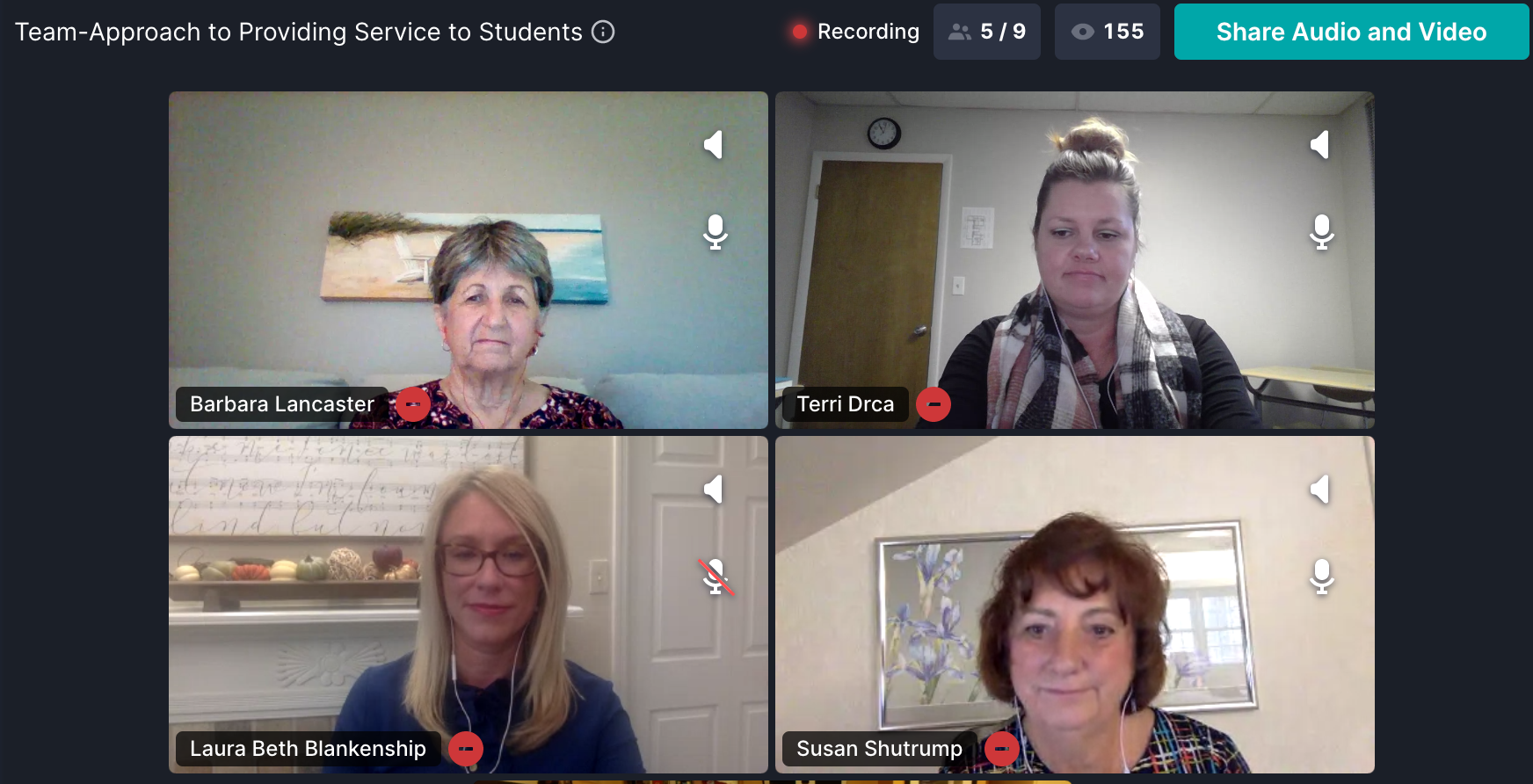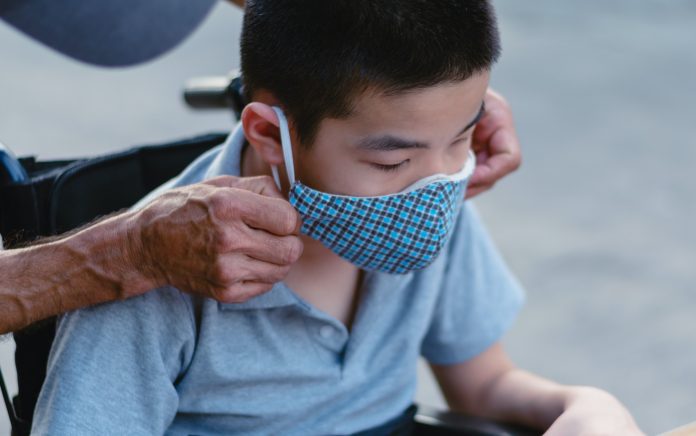The over-arching theme of the virtual Transporting Students with Disabilities and Special Needs conference was the need for increased communication across all district departments as well as contractor partners.
On the last day of the conference, Nov. 11, special education teachers joined together for a panel discussion on their role on the individualized education program (IEP) team and shared with attendees the successes, strategies and difficulties they have encountered with student transportation services.
Sue Shutrump, supervisor of occupational therapy (OT) and physical therapy (PT) services at Trumbull County Educational Service Center in Ohio said she is finding that special educators and service staff have really limited knowledge when it comes to transportation operations.
Laura Beth Blankenship, a physical therapist for Knox County Schools in Tennessee, explained that she had no formal training in student transportation and obtained all her knowledge on the job. She said her greatest challenge was getting the supervisory staff, special education and transportation teams in meetings and on the same page.
When the supervisory staff was on board, Blankenship added, resources flowed more quickly. She said having open channels of communication allows for more meetings where student discipline and safety can be discussed and improved.
Terri Drca, a special education teacher and autism specialist at Davis School District in Utah, explained that she taught in a classroom for 10 years before working at the district office. Drca added that she focuses on getting team members onto the school bus when behavior conditions arise, so teachers have a better understanding of how to help in the school bus environment.
She said her greatest advice is to look at transportation as part of the school day. She said if OTs or PTs forget that, and the two departments are looked at as separate entities. That is where problems can arise.
Barbara Lancaster, a supervisor of special programs for Stafford County Schools in Virginia, said she seldom saw inter-departmental teamwork at play when she first started in the industry. Instead, she said, she had to work to form a bond between transportation, special education and therapists. She advised that everyone learn to speak the same language, as doing so can not only help build mutual respect but also get everyone on the same page.

Sandy Van Baggen, transportation services field operations supervisor at Portland Public Schools in Oregon, commented in the session chat that she set up meetings with her team of OTs and PTS, and brought a small bus for them to get on board and get a feel of what the bus environment was like.
“I also had a volunteer sit in a wheelchair to watch the securement process then took them for a ride,” Baggen commented. “It was a real eye-opener for them, and it helped open the doors to communication. I also talk to our drivers and if they are having challenges, I encourage them to talk to the families to let them know transportation would love to be a part of the IEP meeting. When I attend these meetings typically, they will put transportation first then I leave after we problem-solve.”
Lancaster added that while she doesn’t have drivers and attendants attend every IEP meeting, some meetings are more important for transportation than others. For instance, she recounted an instance at her district when a student needed to be transported to speech therapy. There was a scheduling problem and transportation absolutely needed to be involved in the discussion.
Lancaster said that failures can be the beginning of successes. She advised looking at where the failure occurred and determine what can be done better the next time to ensure success.
Char Timothy, a student transportation supervisor at Minot School District 1 in North Dakota, discussed his experience via the session chat. “When we have had issues with a student and brought it to the attention of the teacher, they get the therapists involved and help us try new things,” he said. “I just wish it could be more pro-active instead of reactive.”
Meanwhile, Chris Mulhern, an administrator for special education programs at Washoe County School District in Reno, Nevada, joined the panel on screen to discuss the importance of including school principals in planning and to advocate for transportation to attend IEP meetings.
Mulhern said being privy to student information can help drivers provide better service to their students. He added that his transportation team meets monthly with the special education, foster children, and English-language learner departments to ensure they are all on the same page.
Drca added that her district also meets monthly with transportation to foster that communication and discuss immediate needs and long-term goals for the student.
Lancaster said when her district gets to the IEP table, all parties need to know the transportation department’s capabilities. She said transportation shouldn’t be asked to do something it can’t do quickly or at all. She advised that instead of transportation officials saying “no,” they should share what they can in fact do and offer solutions.
“We can’t do this, but we can do this,” Lancaster advised. “…Having other ideas shows [other departments] we are willing to communicate, and we are willing to offer up solutions. I don’t like to say ‘no,’ unless it is a big safety concern. I want to yes, sometimes I have to say ‘yes, but.’”
Michelle Carr, a physical therapist at JD McCarty Center in Norman, Oklahoma, also joined on screen to share her perspective. She said she initiated the first conversation with the local transportation director about concerns she had with the school bus ride. Carr said she now offers training to both the transportation department and other PTs in her department so they know how to get involved and ask the right questions.
Carr said she’s provided training at the beginning of the school year, as part of the driver’s mandatory training prior to school, as well as on an individual basis when drivers request it throughout the year.
Related: Student Transporters Share Experiences with School Bus Fire Suppression Systems
Related: Importance of Bus Camera Systems In Special Needs Transportation
Related: Experts Share Tips for Re-engaging Students with Special Needs During Reopening
Related: TSD Virtual Debunks Common Assumptions When Transporting Students with Special Needs
Related: Temple Grandin Shares Expert Perspective on Autism Spectrum During TSD Virtual
Shutrump said one of the biggest solutions transportation departments can do, is to invite OTs and PTs onto the school bus. She said it’s hard to come up with good strategies without knowing the bus environment. She suggested that transportation show the therapists the high seatbacks, as there have been changes made to the school bus since many of these professionals were last on board.
Lancaster said another tool is including the bus environment in forms sent to parents on their child’s specific needs. Questions such as those listed below should be included:
- What equipment does your child need?
- What other things should the transportation staff know?
- Who should the child be released to?
Lancaster added that answering such questions will help transportation staff better transport the child. She advised to do as much as possible electronically so that people aren’t shuffling papers and information isn’t getting lost. Lancaster added that her staff also participates in confidentiality training.















